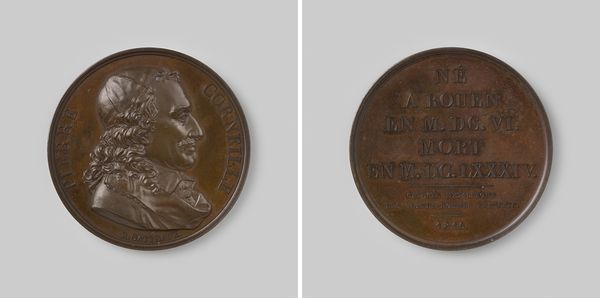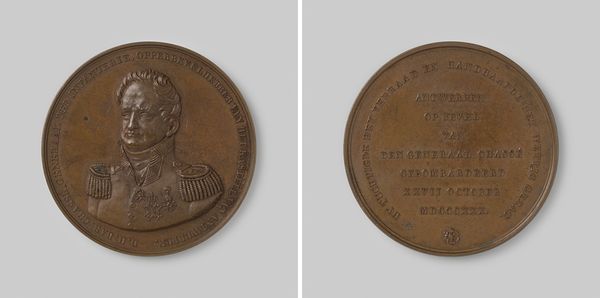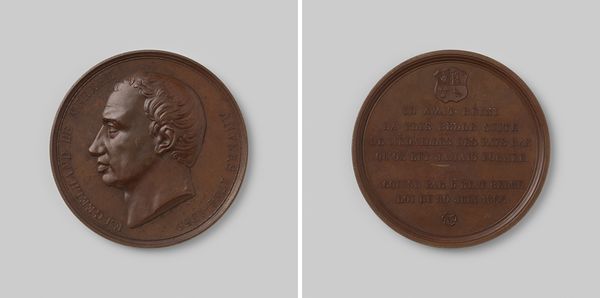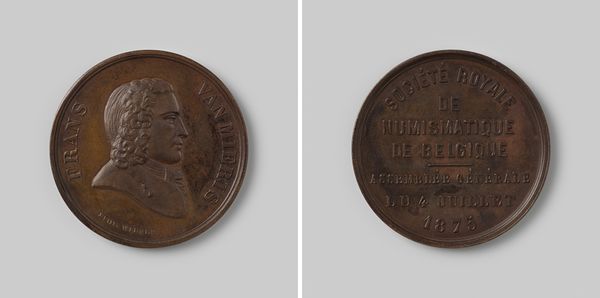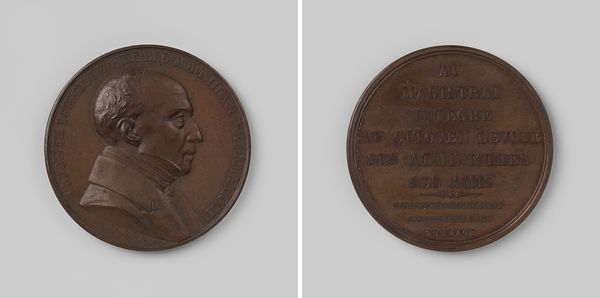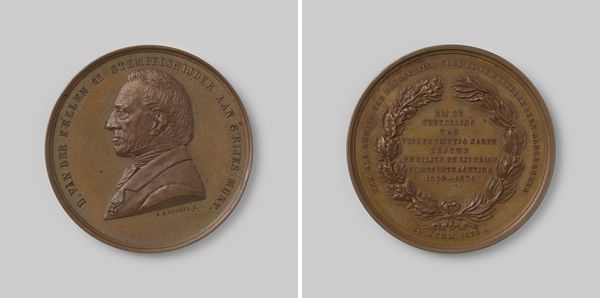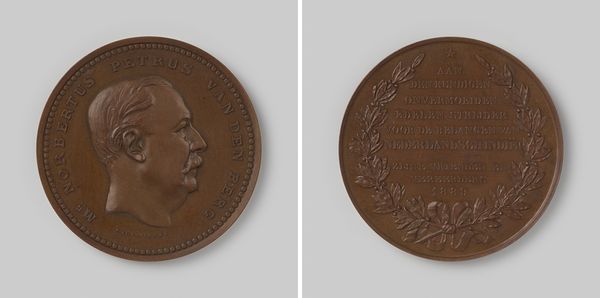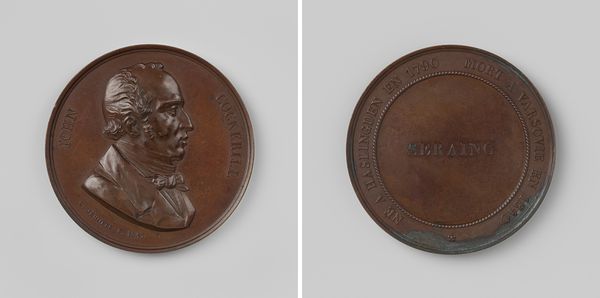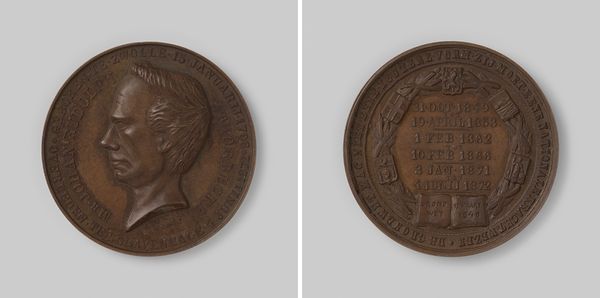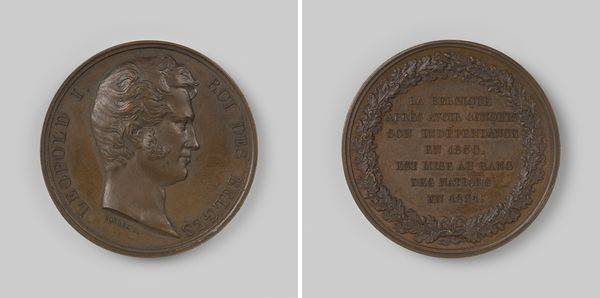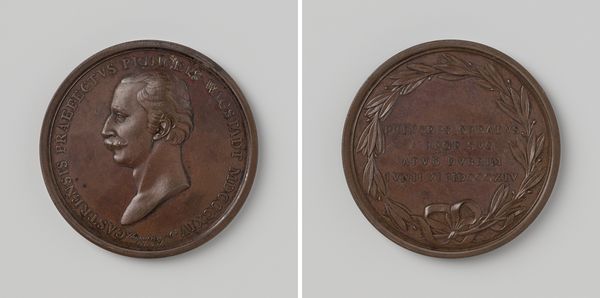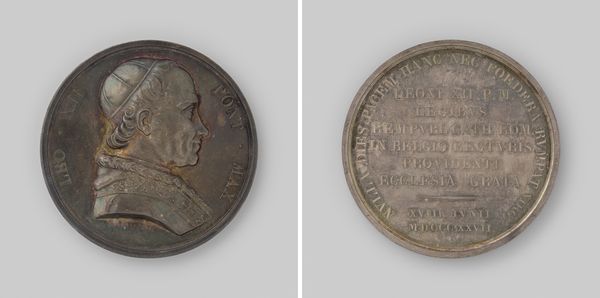
P.H. van Gelder, buitenlands lid van de Societe Royale de Numismatique de Belgique 1871
0:00
0:00
metal, relief, bronze, sculpture
#
portrait
#
metal
#
sculpture
#
relief
#
bronze
#
sculpture
#
history-painting
#
academic-art
Dimensions: diameter 3.3 cm, weight 11.97 gr
Copyright: Rijks Museum: Open Domain
Curator: This bronze relief, crafted in 1871 by Léopold Wiener, commemorates P.H. van Gelder, a foreign member of the Royal Numismatic Society of Belgium. Editor: My first impression is one of somber formality. The profile portrait is stoic, almost severe, despite being rendered in such tactile, warm bronze. It feels like a very controlled expression of civic pride. Curator: It is, in many ways. Wiener was a prominent medalist, and these commemorative pieces were vital expressions of institutional and national identity in the 19th century. The Societe Royale, seeking to solidify its prestige, would commission pieces like these. Editor: So it’s less about Van Gelder, the individual, and more about what he represents to the society? The inscription dominates the reverse of the medal—literally circling Van Gelder’s achievements, but the association seemingly takes precedence over individual portraiture. Curator: Exactly. These medals circulated within specific networks—a currency of esteem and recognition. Think about the academic art world—it was often driven by who you know and with whom you're associating, creating an apparatus to recognize one another’s social standing in broader historical narratives. Editor: It's intriguing to see the back rendered completely devoid of portraiture. It certainly underscores how exclusive intellectual and artistic societies, for so long, remained unwelcoming to, for instance, women. They essentially self-recognized their membership of privilege through these symbolic material expressions, continuing historical imbalances of power. Curator: Well, and in this moment in Belgium, it was equally about building an institutional apparatus within a relatively new nation. It reflects on an academic system being designed that mirrored structures on the Continent. Editor: While the artistic execution might be typical of its era, its historical function makes one consider whose faces—and whose contributions—are systematically elevated, and conversely, whose have been omitted. It is hard to simply admire without seeing such relics within a social and political context. Curator: Precisely. It's in understanding that broader historical context, understanding that museums played a key role in creating those structures that we really see the deeper meanings of such a medallion. Editor: It's a small piece that casts a long shadow. Thank you for providing such context.
Comments
No comments
Be the first to comment and join the conversation on the ultimate creative platform.
